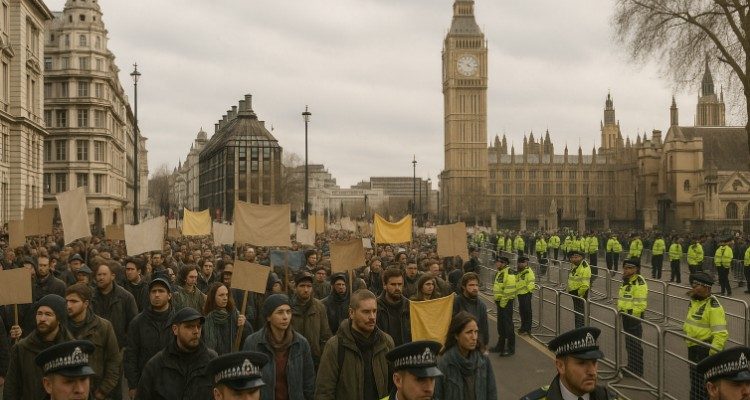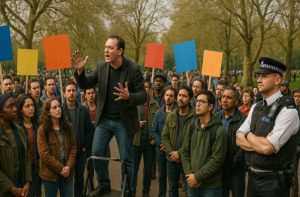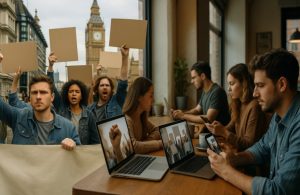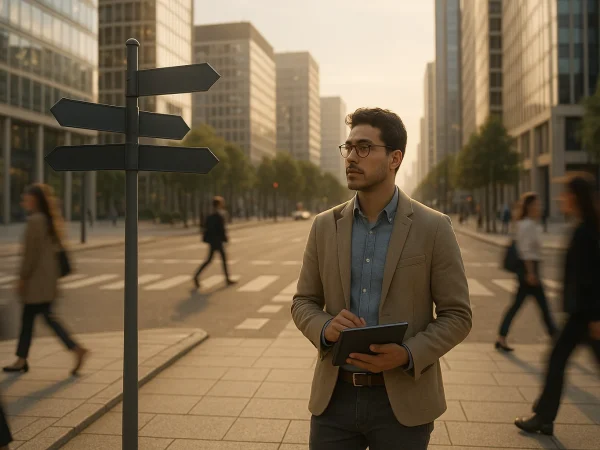
Freedom of Speech vs Public Safety: Where Does London Draw the Line?
London has long been regarded as a city where freedom of speech is cherished. From the historic debates at Speakers’ Corner in Hyde Park to modern-day protests, the UK’s capital is a hub for voices calling for change.
However, balancing the right to protest with public safety and urban order presents a complex challenge.
As tensions around various social issues rise, including the recent proposals for a new definition of Islamophobia, the question remains: where does London draw the line between freedom of speech and public safety?
The Right to Protest: A Pillar of Democracy

In a city that prides itself on its democratic values, the right to protest is considered sacred.
London has a rich history of protest movements, from the suffragettes fighting for women’s rights to modern-day climate change activists.
The UK’s legal framework supports the right to assemble peacefully and express dissent, provided it does not incite violence or disrupt public order.
The ability to voice one’s opinion is protected under the Human Rights Act 1998, which incorporates the European Convention on Human Rights into UK law.
This means that British citizens have the right to “freedom of expression” and the right to “freedom of assembly,” with a few restrictions aimed at protecting public safety, national security, and the rights of others.
Safety and Order During Protests
However, the reality of protests in London is more complicated. Over recent years, protests in central areas like Westminster, Trafalgar Square, and Parliament Square have raised concerns about disruptions to public life, transport networks, and even clashes between rival groups.
In 2025, it is clear that London’s authorities have been grappling with this issue.
The Metropolitan Police plays a key role in managing these events, attempting to ensure both the safety of protesters and the public.
At times, this has led to clashes, such as the controversial “Kill the Bill” protests against police powers in 2021.
This sparked intense debates about how much power law enforcement should have in regulating protests, particularly those perceived as causing major disruption or posing a threat to public safety.
Safety Concerns and Legal Boundaries
The key legal question is whether a protest crosses the line between peaceful demonstration and unlawful activity.
As protests become increasingly large-scale, the risk of violence escalates. Acts of vandalism, clashes with police, and the blocking of vital roads can jeopardise public safety.
These risks raise an important issue: when does freedom of speech stop being a fundamental right and become a threat to order?
The Public Order Act 1986 gives police the power to control protests if they are deemed likely to cause serious disruption to public order.
Yet, questions persist about whether these powers infringe upon citizens’ right to protest.
Islamophobia and the New Definition Proposal
In 2025, a new definition of Islamophobia has sparked further debates around freedom of speech. The proposal, which aims to legally define Islamophobia as a form of racism, is controversial.
On one hand, proponents argue that it is necessary to combat rising anti-Muslim sentiment and protect the Muslim community from hate speech.
On the other hand, critics claim it could stifle free speech, making it difficult to discuss issues related to Islam, such as Islamic extremism, without fear of being labelled Islamophobic.
While the proposal has yet to be formally adopted, it raises questions about how freedom of speech is managed in relation to specific communities.
Would this definition allow for more effective protection against hate speech, or would it open the door to potential censorship?
The reality is that defining such complex issues within a legal framework is fraught with challenges.
Laws must balance protecting people from harm with ensuring that people are free to voice their opinions even when those opinions are controversial.
Ethical and Practical Implications
For many, the ethical debate boils down to one key question: Should the right to free speech ever be limited to protect public safety?
While the law provides clear guidelines for public order, the question of ethics is more subjective. How far can a protester go to express their beliefs without undermining the fabric of society? Does the presence of protests that challenge public order be they about climate change, immigration, or political freedoms diminish society’s overall sense of security?
One of the biggest ethical challenges is ensuring that the line between offensive speech and hate speech is not blurred.
Protesters have the right to oppose government policies, but when their actions threaten public safety or incite hate, there is a need for regulation.
At the same time, it is crucial that such regulation doesn’t become an overreach, limiting fundamental rights.
A Modern Challenge: Digital and Offline Protests

In 2025, protests are no longer limited to the streets of London. Digital protests ranging from social media campaigns to online petitions are gaining prominence.
These forms of protest can have a massive impact, but they also come with their own set of safety concerns.
The power of social media in facilitating rapid mobilisation has led to both positive and negative consequences, from successful campaigns calling for social justice to instances of misinformation or online harassment.
Safety Tip: While online protest platforms provide a space for freedom of speech, they can also become breeding grounds for hate speech and incitement to violence.
Authorities must be vigilant about monitoring these digital platforms to prevent harmful actions both online and offline.
How Should England Strike the Balance?
In London, the line between freedom of speech and public safety is continually being tested.
As protest movements grow and issues like Islamophobia become increasingly central to public debate, the need for a legal and ethical framework that ensures both free expression and public order has never been more urgent.
The challenge for London, and for the UK as a whole, is to create a space where protest can flourish, but where public safety and national security are equally protected.





